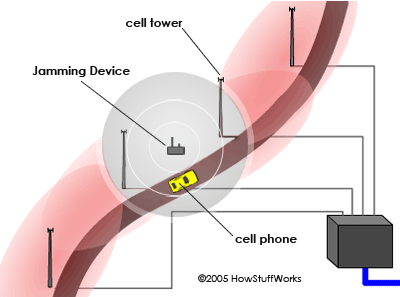Man Fined For Jamming Cell Phones On Daily Commute
This article is more than 2 years old
 If you don’t want Google Glass wearers accessing data around you, you can use a new program to disrupt and block their Wi-Fi. It’s even easier to do essentially the same thing to cell phones using a cell phone jammer, which retails anywhere from $150-$400, depending on how powerful a device it is. While I can certainly understand the urge to jam cell phones, especially on public transportation, a motorist was recently fined $48,000 by the FCC for using a jammer on his commute.
If you don’t want Google Glass wearers accessing data around you, you can use a new program to disrupt and block their Wi-Fi. It’s even easier to do essentially the same thing to cell phones using a cell phone jammer, which retails anywhere from $150-$400, depending on how powerful a device it is. While I can certainly understand the urge to jam cell phones, especially on public transportation, a motorist was recently fined $48,000 by the FCC for using a jammer on his commute.
60-year-old James Humphreys bought an illegal cell phone jammer and used it for two years before he was caught. The technology is pretty simple, really, and works like any other radio communication-jamming device—by denying service of the same radio frequencies that a cell phone uses, and interrupting the phone’s communication with cell phone towers. Low-powered jammers can block phone usage for about 30 feet, but higher-powered ones can block signals for about a mile. In the U.S., the Communications Act of 1934 makes cell phone jamming illegal, and is supposed to make the manufacture and sale of those devices illegal as well. Private citizens in most countries can’t legally jam cell phones, though certain organizations can, such as prisons, parliament in India, and performances spaces in France. Until this case, the FCC hadn’t targeted any individuals for jamming cell phones.
 Over a year ago, the FCC received a complained from Metro PCS about cell phone tower interference problems between Seffner and Tampa, Florida. The interruptions occurred during morning and evening commute times, so the FCC began monitoring for wideband emissions and eventually found Humphrey’s SUV. As they got closer to the car, even their two-way radios stopped working. They found the jammer under the passenger side seat cover.
Over a year ago, the FCC received a complained from Metro PCS about cell phone tower interference problems between Seffner and Tampa, Florida. The interruptions occurred during morning and evening commute times, so the FCC began monitoring for wideband emissions and eventually found Humphrey’s SUV. As they got closer to the car, even their two-way radios stopped working. They found the jammer under the passenger side seat cover.
Humphreys said he was fed up with watching people use their cell phones while driving, and decided to take matters into his own hands—at least, within range of his own vehicle. It may be illegal, but his argument makes sense. More often than not, when drivers have cell phones in their hands it’s not just their own lives they’re messing with. At the same time, jammers interfere not just with others’ cell phones, but also with police radios and emergency response communications. Still, I empathize with Humphreys, a lot. And if it weren’t illegal, I’d think about buying a low-grade jammer and using it in the classroom.












